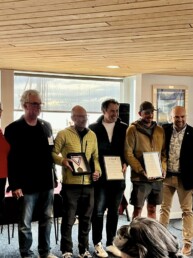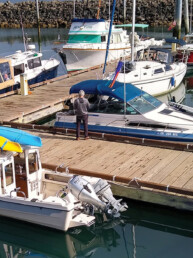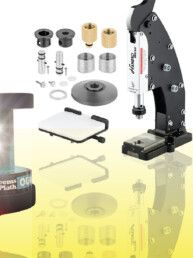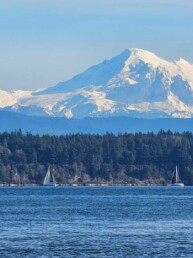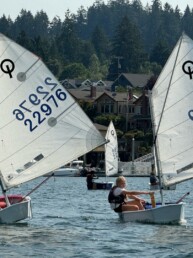The storied voyaging canoe, Hōkūleʻa, completed its visit to Puget Sound ports this week with an emotional reception in Port Townsend.
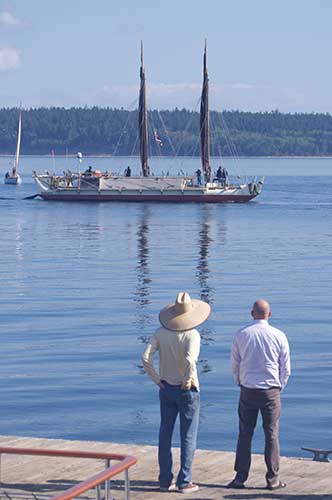 Never has there been a better summer, week, or day for a visit from Hōkūleʻa, the Hawaiian voyaging canoe built in 1975, named for the Star of Gladness, and with crew carrying a message of resilience and hope for peoples of the Pacific and for all of us — and for the ocean and earth.
Never has there been a better summer, week, or day for a visit from Hōkūleʻa, the Hawaiian voyaging canoe built in 1975, named for the Star of Gladness, and with crew carrying a message of resilience and hope for peoples of the Pacific and for all of us — and for the ocean and earth.
Hōkūleʻa traveled south through British Columbia from Alaska, and recently made a brief tour of Puget Sound where they visited Seattle and Tacoma and were ceremonially welcomed by members of Indigenous Tribal Nations and other civic leaders in both ports. When I got a text that the now northbound Hōkūleʻa was rounding Marrowstone Island and making her way across Port Townsend Bay to the Northwest Maritime Center (NWMC), I stopped work on my Danish Spidsgatter, Pax, and drove to Point Hudson. A wave of emotion grew stronger as I parked and walked across the land where indigenous peoples of the Salish Sea had beached their canoes for millennia.
As I got close, my pace slowed and I stopped a few minutes at the totem pole, gifted to the NWMC by the Jamestown S’klallam tribe as a 21st century symbol of shared vision. “With a tremendous appreciation of our Coast Salish seafaring history and respect for those who have preserved and shared their knowledge throughout the centuries.” I was entering a sacred place, approaching a reunion thousands of years in the making. I was only a witness and, yet, in spirit was overwhelmed with gratitude for this place, these examples of indigenous knowledge and tradition, the connections between all of us.
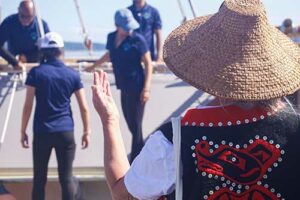 There were hundreds of people lining the dock and a long line formed for onboard tours. I spotted local S’klallam and Makah elders, their distinctive dress, hats, and drums making them easy to find in the crowd. As hoped, they were down front, part of what I would later learn was a series of welcome and voyaging songs, drumming, and ceremony.
There were hundreds of people lining the dock and a long line formed for onboard tours. I spotted local S’klallam and Makah elders, their distinctive dress, hats, and drums making them easy to find in the crowd. As hoped, they were down front, part of what I would later learn was a series of welcome and voyaging songs, drumming, and ceremony.
A Hawaiian friend who lives in Port Townsend walked by. We hugged and stood with tears in our eyes. At first, no words. Then, one of several conversations: about family and friends on Maui, about the devastating fires on that island and in this region, about our deep concern for the earth; and for Hōkūleʻa’s voyage ahead to South America.
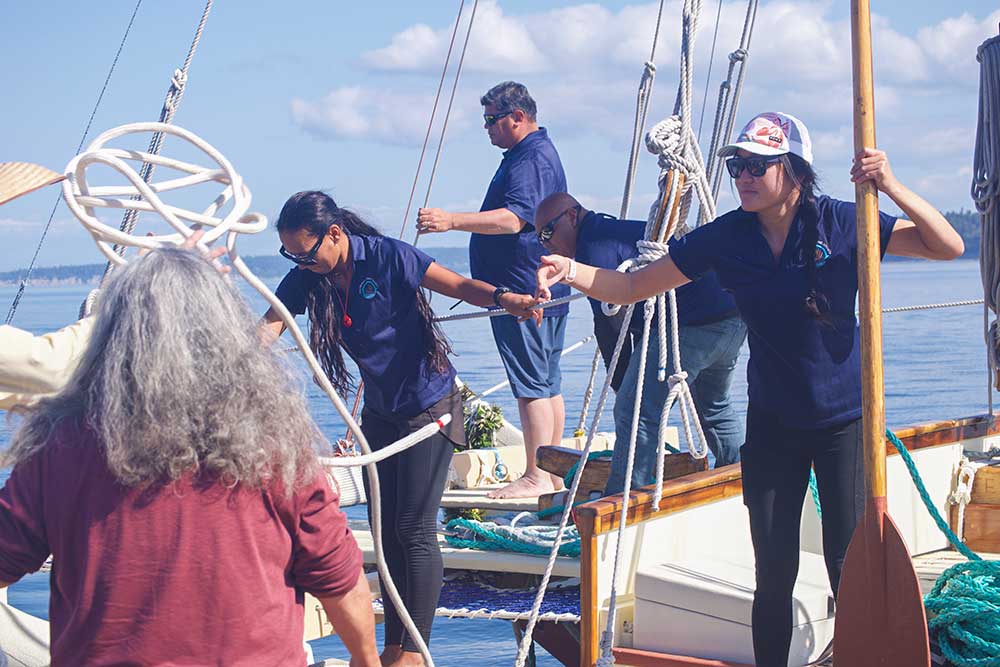
“Paddling taught me all I need to know about life,” she said. “About the ocean, about teamwork, about our vulnerability and our strength.” Her uncle was on the first voyage of Hōkūleʻa back in 1975. A voyage proving ancient knowledge. Hawaiians hadn’t made a voyage like that for 600 years, its people were facing what they call “cultural extinction.” There was not a navigator with the ancient skills remaining in their culture. So, as the history on Hōkūleʻa’s website details, “The Voyaging Society looked beyond Polynesia to find a traditional navigator to guide Hōkūle‘a: Mau Piailug, a navigator from a small island called Satawal, in Micronesia.” Rediscovering that knowledge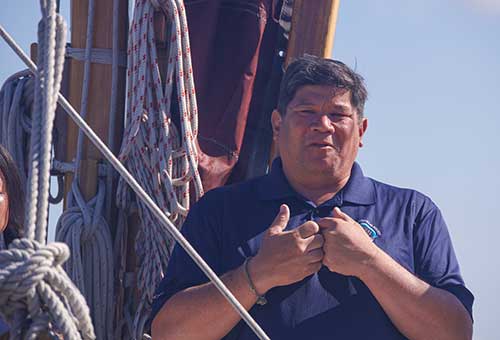 and committing to learn and continue had likely saved their culture. “Before the Polynesian Voyaging society, before Hawaiian language programs, before the acknowledgement of Hawaiian culture in the state and nation, there was Hōkūleʻa,” said my friend.
and committing to learn and continue had likely saved their culture. “Before the Polynesian Voyaging society, before Hawaiian language programs, before the acknowledgement of Hawaiian culture in the state and nation, there was Hōkūleʻa,” said my friend.
What Piailug so generously shared of lost voyaging knowledge — of navigating by stars, waves, and spirit — Nainoa Thompson and other Hawaiians have deepened for decades. Their work, and seeing Hōkūleʻa in the 1990s, made a life-long impact on me when living two years on Oahu and Kauai.
I joined the line for tours, chuckling with the crew member teaching me about modern QR-code technology as I waited to board a voyaging canoe designed to sail by the stars. Onboard this double hulled wooden wa’a (canoe), with its beautifully carved hoe uli (steering paddle), one of the crew pointed out the two ki’i (carved images of gods — one male and one female) mounted facing forward on each of the sterns. “They are only on the canoe when we are voyaging,” he said. “So we can find our way home.”
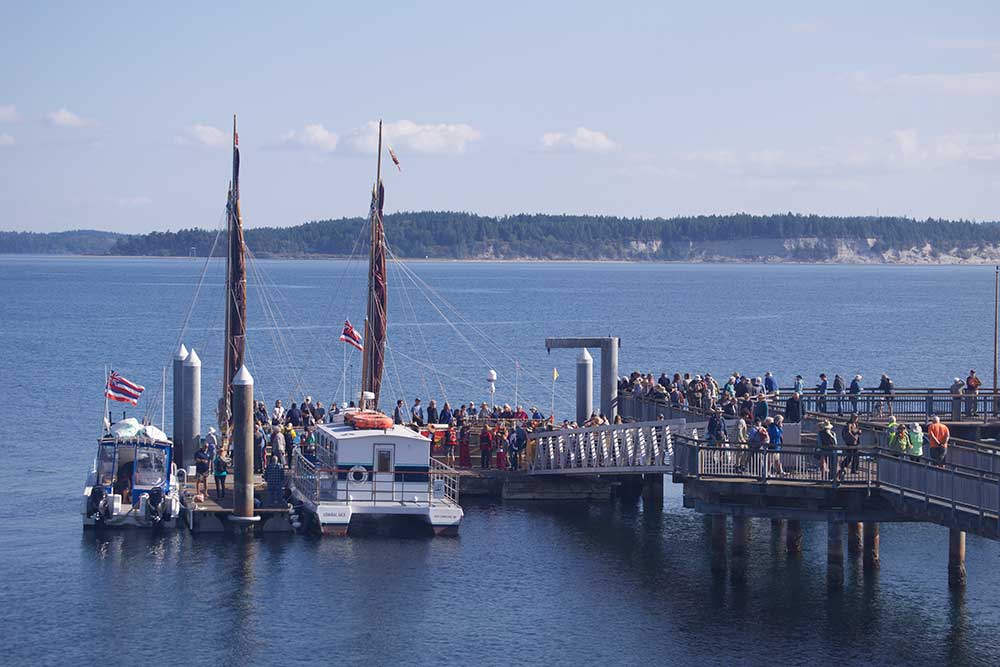
What better reminder did I need, do we all need, to look beyond ourselves for guidance in the next leg of our voyage — to trust our wooden boats, the stars, the ocean, and fellow crew — to return home with more wisdom than when we left. Even if it takes 600 years.
Photos by AJ Hawkins.

